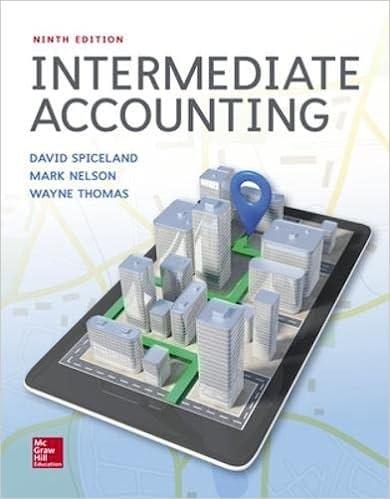Bradley-Link's December 31, 2018, balance sheet included the following items: Long-Term Liabilities ($ in millions) 9.6% convertible
Question:
Bradley-Link's December 31, 2018, balance sheet included the following items:
Long-Term Liabilities ($ in millions)
9.6% convertible bonds, callable at 101 beginning in 2019, due 2022 (net
of unamortized discount of $2) [note 8].....................................................$198
10.4% registered bonds callable at 104 beginning in 2028, due 2032 (net
of unamortized discount of $1) [note 8].......................................................49
Shareholders' Equity Equity-stock warrants.................................................4
On January 3, 2019, when Bradley-Link's common stock had a market price of $32 per share, Bradley-Link called the convertible bonds to force conversion. 90% were converted; the remainder was acquired at the call price. When the common stock price reached an all-time high of $37 in December of 2017, 40% of the warrants were exercised.
Required:
1. Prepare the journal entries that were recorded when each of the two bond issues was originally sold in 2005 and 2009.
2. Prepare the journal entry to record (book value method) the conversion of 90% of the convertible bonds in January 2019 and the retirement of the remainder.
3. Assume Bradley-Link induced conversion by offering $150 cash for each bond converted. Prepare the journal entry to record (book value method) the conversion of 90% of the convertible bonds in January 2019.
4. Assume Bradley-Link induced conversion by modifying the conversion ratio to exchange 45 shares for each bond rather than the 40 shares provided in the contract. Prepare the journal entry to record (book value method) the conversion of 90% of the convertible bonds in January 2019.
5. Prepare the journal entry to record the exercise of the warrants in December 2019.
Common StockCommon stock is an equity component that represents the worth of stock owned by the shareholders of the company. The common stock represents the par value of the shares outstanding at a balance sheet date. Public companies can trade their stocks on... Balance Sheet
Balance sheet is a statement of the financial position of a business that list all the assets, liabilities, and owner’s equity and shareholder’s equity at a particular point of time. A balance sheet is also called as a “statement of financial...
Step by Step Answer:

Intermediate Accounting
ISBN: 9781259722660
9th Edition
Authors: J. David Spiceland, James Sepe, Mark Nelson, Wayne Thomas





